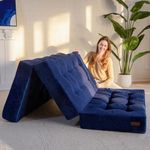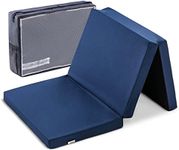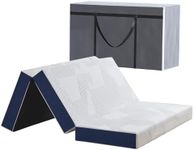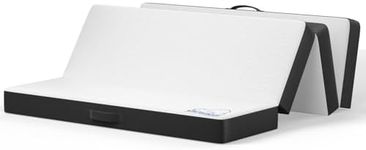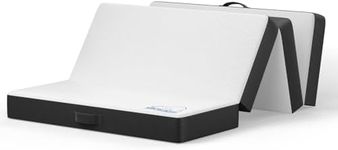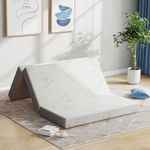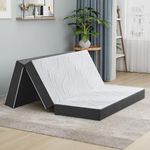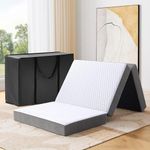Buying Guide for the Best Folding Mattresses
Choosing the right folding mattress can significantly impact your comfort and sleep quality, whether you're using it for guests, camping, or as a temporary bed. It's important to consider various factors to ensure you get a mattress that meets your needs. Here are some key specifications to look at when selecting a folding mattress.MaterialThe material of a folding mattress affects its comfort, durability, and ease of maintenance. Common materials include memory foam, polyurethane foam, and latex. Memory foam offers excellent support and conforms to your body shape, making it ideal for those who need extra comfort. Polyurethane foam is lighter and more affordable but may not provide the same level of support. Latex is durable and hypoallergenic, suitable for people with allergies. Consider your comfort preferences and any specific needs like allergies when choosing the material.
ThicknessThickness determines the level of support and comfort a folding mattress can provide. Thinner mattresses (2-3 inches) are more portable and easier to store but may not offer sufficient support for extended use. Medium thickness (4-6 inches) provides a balance between comfort and portability, suitable for occasional use. Thicker mattresses (7 inches or more) offer the best support and comfort, ideal for regular use or for people with back issues. Think about how often you'll use the mattress and your comfort needs when deciding on thickness.
SizeFolding mattresses come in various sizes, including twin, full, queen, and even custom sizes. The size you choose should depend on the available space and the intended use. Twin size is compact and easy to store, perfect for single sleepers or small spaces. Full and queen sizes offer more sleeping area, suitable for couples or larger spaces. Measure the area where you plan to use the mattress and consider who will be using it to determine the best size for your needs.
PortabilityPortability is crucial if you plan to move the mattress frequently or use it for travel. Look for features like handles, lightweight materials, and compact folding designs. A mattress with handles is easier to carry, while lightweight materials make transportation less cumbersome. Compact folding designs ensure the mattress can be stored easily when not in use. Consider how often you'll need to move the mattress and where you'll store it to find the right balance of portability and convenience.
CoverThe cover of a folding mattress can affect its durability, comfort, and ease of cleaning. Covers made from breathable fabrics like cotton or bamboo are comfortable and help regulate temperature. Waterproof or stain-resistant covers are practical for easy maintenance, especially if the mattress will be used by children or in outdoor settings. Removable and machine-washable covers offer convenience for regular cleaning. Think about your usage scenario and maintenance preferences when choosing a cover.
FirmnessFirmness is a key factor in determining the comfort level of a mattress. Soft mattresses provide a plush feel and are suitable for side sleepers or those who prefer a cushioned surface. Medium-firm mattresses offer balanced support and comfort, ideal for back sleepers or those who need a mix of softness and support. Firm mattresses provide strong support and are suitable for stomach sleepers or people with back pain. Consider your sleeping position and comfort preferences to choose the right firmness level.


